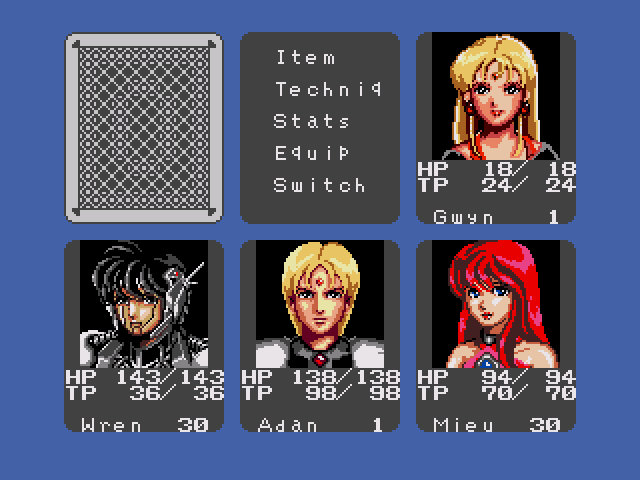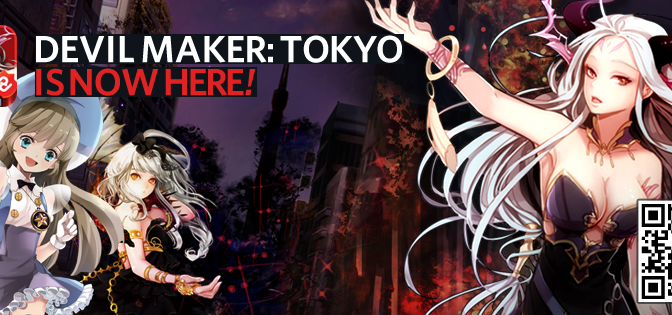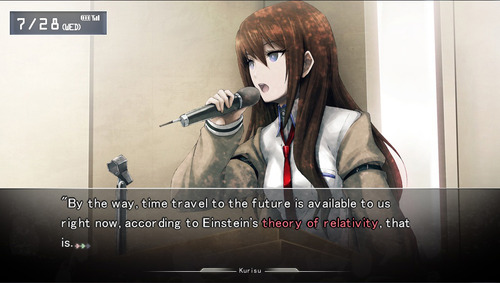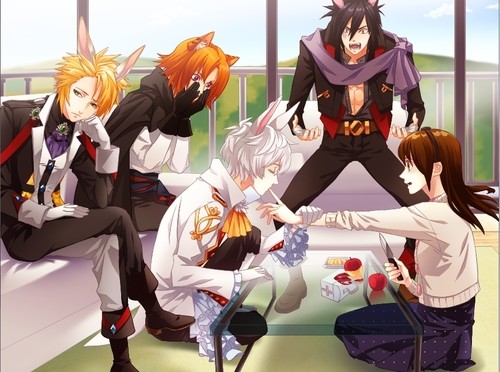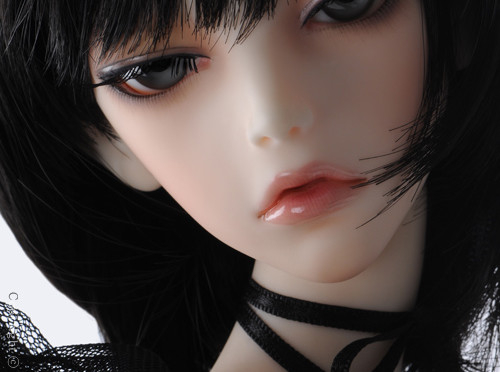Title: Phantasy Star 3 Generations of Doom
Genre: RPG with Dating Sim elements
Publisher: Sega
Release Date: July 1991
Platforms: Originally for the Sega Genesis, it has since been ported to virtually every console, including the PC
Where to Buy: I recommend the Sega Genesis Collection which includes Phantasy Star II, III, and IV (and a buncha other awesome retro games). You can get it on amazon here: http://www.amazon.com/Sega-Genesis-Classic-Game-Online/dp/B00AEV8HI2
Geeky Factor: 


Sweetie Factor: 


Overall: 59/80 74% C “Good Game For Girls”
Concept: 10/10 It was one of the first, if not the first, game to have generational gameplay. By that I mean, during the game you select other party members to marry and the story continues throughout your blood line with some slight variation depending on your choices.
Story: 10/10 This is a very deep and intricate story; afterall they need 3 generations to tell it. Unlike other Phantasy Star titles, this game features a more “traditional” fantasy based setting (as opposed to more scifi themes found in the other Phantasy Star games) Although the game does still contain some scifi elements (spaceships, cyborgs, etc), These features appear much later on in the story and are often shown as “lost technology” that is no longer available. The world has regressed technologically since the story in Phantasy Star II and this gives the setting more of a fantasy feeling overall.
The story begins on the day of your wedding, you are getting married to a young woman who mysteriously washed up on the shore with no memories of her past. On the day of your wedding, your bride to be is kidnapped before the ceremony and you begin your journey to rescue your love. Things are not at all what they appear though, and as the game continues to unfold, you discover the source of racial conflict in your lands and come to an understanding between the two nations. Depending on who you choose to marry at the end of each chapter, you will experience different points of view from different warring factions, which helps you come to understand and even sympathize with your enemy. The story is rich in lore, history, it’s own religions, and strong back story.
Characters: 7/10 The characters are unique, consisting of 3 warring races, including Android, Orakian, and Layan. The race and ancestry of your main character is determined by choices you make in the game by marrying various characters. As mentioned above, this also impacts which parts of the story you see. It also determines their stats, abilities, and strengths and weaknesses, as well as preferred fighting style. Some characters are very deep and memorable such as Wren; while other characters don’t feel as well fleshed out as they could have been. – Perhaps due to the fact that characters come and go so frequently in the game, with the exception of Wren and Mieu. This leaves me often not as emotionally invested in any of the generations or characters as I would have hoped to be. Overall, the characters are full of interesting and complicated back stories and have as rich a history as the game world itself, but yet they fail to “connect” with the player in a memorable way and this may be a fault of the translation, or of the original script itself, but they are just rather bland feeling. When you’re supposed to save these people, fall in love with them, marry them, and have their children, and care enough about what happens to their kingdoms and the future generations, I think it falls a bit short in character development in this regard.
Gameplay: 10/10 As I mention above, the gameplay in Generations of Doom is really fun; for that reason, it’s my favorite game in the series. I love the generations system, and while it has been done a few times since then (Agarest War comes to mind for example), at the time of it’s release, I believe this was a revolutionary concept that no other game had attempted before. The generation system aside for a moment, the rest of the game is standard 16 bit rpg gameplay, exploring dungeons, interacting with npcs, undertaking quests, finding treasure, solving puzzles and riddles, and engaging in turn based combat.
Graphics: 4/10 Even back in it’s own time, the graphics in Phantasy Star 3, do not impress. The character portraits are lovely, and very detailed; but the graphics in combat, as well as when exploring the maps, just don’t have enough “depth” and come up looking very flat, even when compared to other 90s games. I’m surprised that it did not get a version on sega cd, with anime cut scenes since there are many story scenes featuring still anime images within the game (which are of low quality in their current state). It would have been nice to see it receive a treatment similar to Lunar or Vay, as it has the same anime “feel” to it. Also for some reason, some battle animations and backgrounds were removed from the US release. The Japanese version used parallax sliders to help create depth, which may have fixed some of the issues described above with the “flat” feeling graphics. Why they changed this is a mystery to me. Some screenshots for you below.




Music: 7/10 -The soundtrack has a large variety of music which helps immerse the user in moments of suspense, mystery, and adventure. There are multiple different battle themes, and also the overworld map music changes frequently as characters join or leave your party. The music itself has a symphony-inspired feeling, although it is dated by today’s standards and the technology of its time limited some of what could be done in the soundtrack. The music is composed by Izuho Numata who is well loved for his work in Ys and Sonic the Hedgehog. Although the soundtrack offers many different tracks and does help draw the player into the world of Phantasy Star III, compared to his other works, this soundtrack seems less memorable, although still quite lovely.
Replay Value: 5/10 Although the game does have multiple endings, and different branches within the story, it is often criticized for not having “meaningful” changes; many players argue that the endings’ differences are too slight to warrant multiple playthroughs, but what I enjoyed was seeing the story told from the point of view of the different races. These racial tensions are really the whole heart of the story; and it’s important to see the different experiences each race has, to understand how they’ve arrived at hating one another over the years. For that reason, I would argue that it’s worth replaying. But I agree, ultimately it’s the same story being told, just with a different point of view each time.
Overall: 59/80 74% C “Good Game For Girls”
